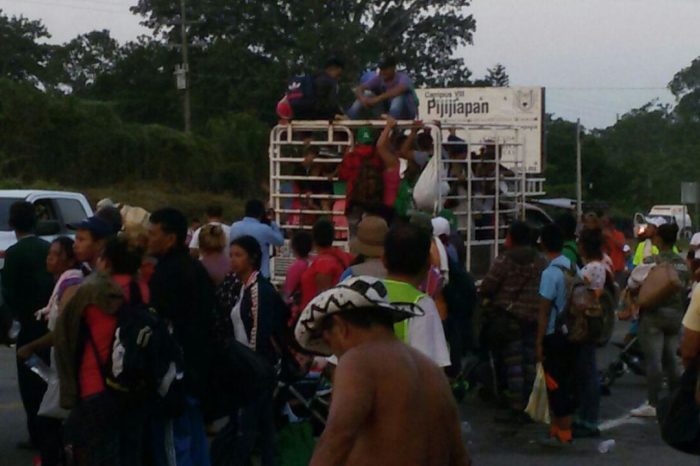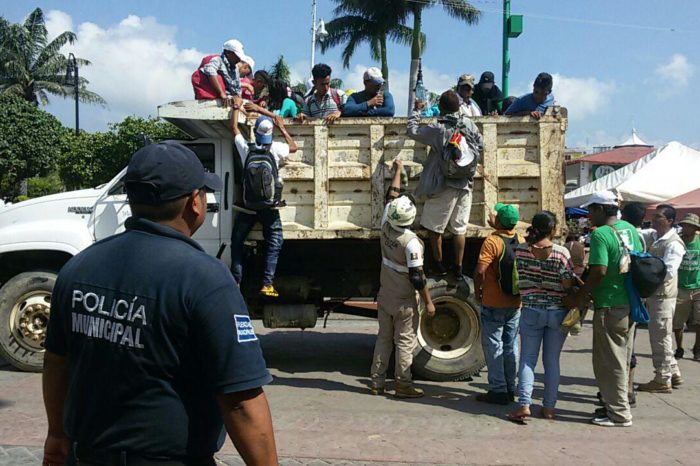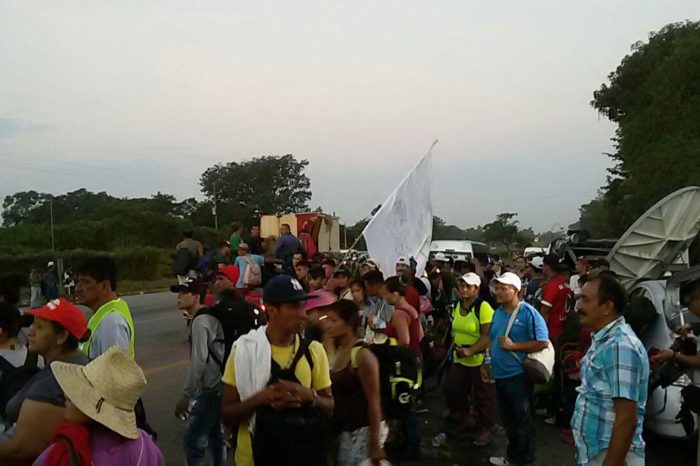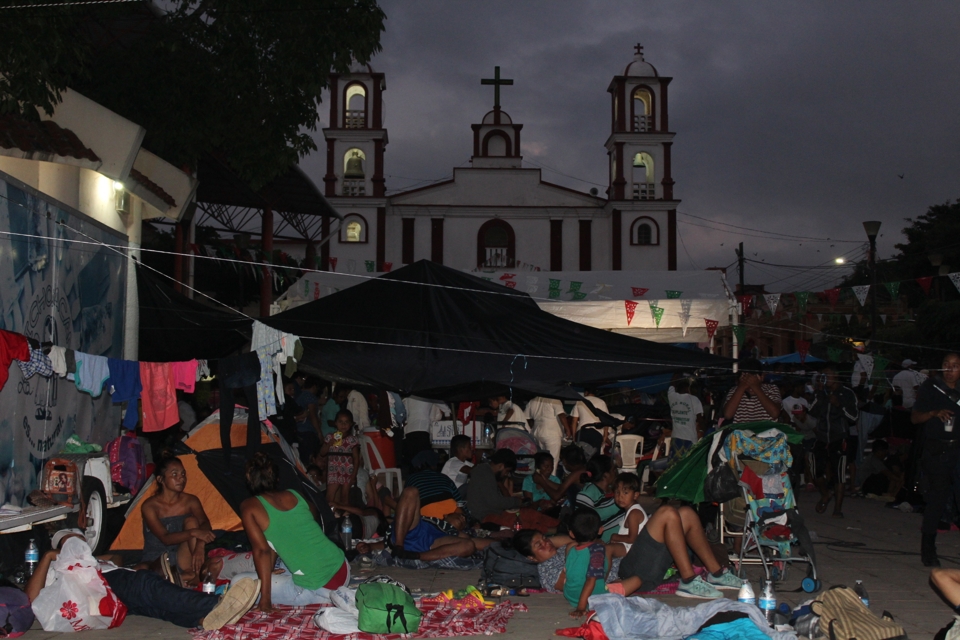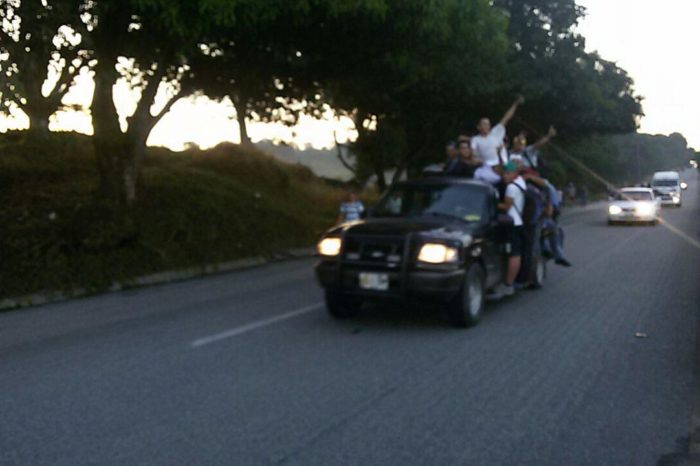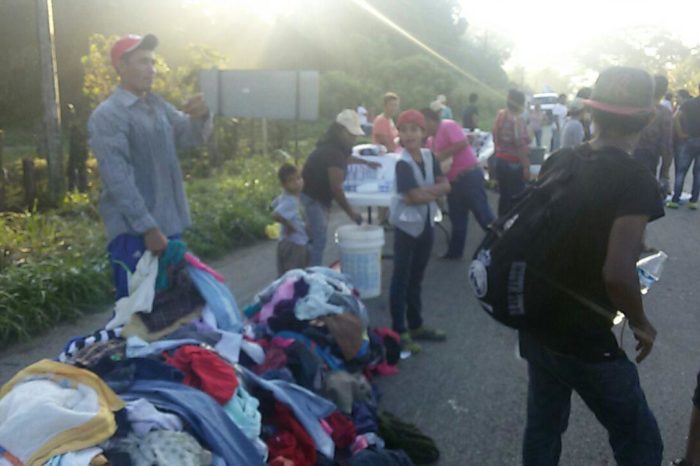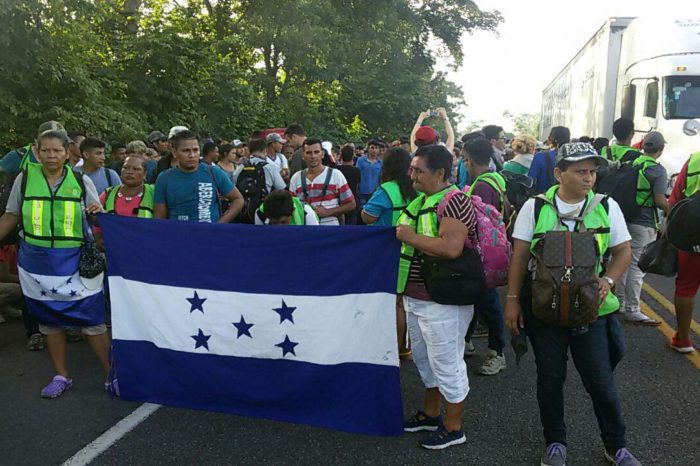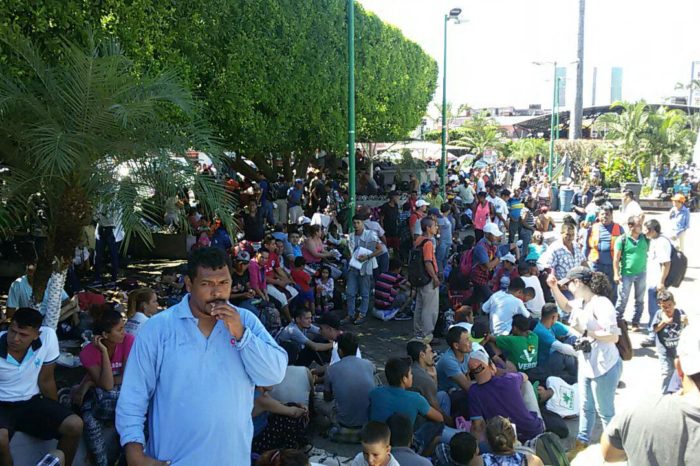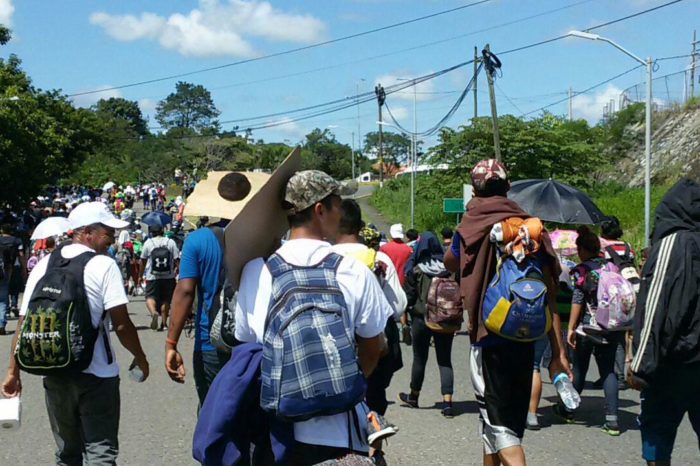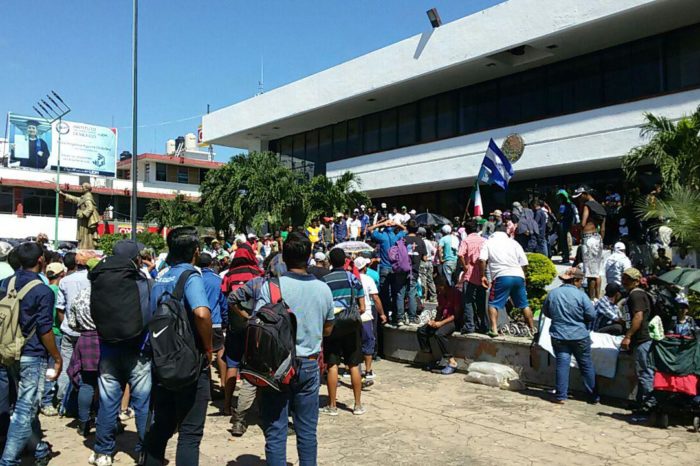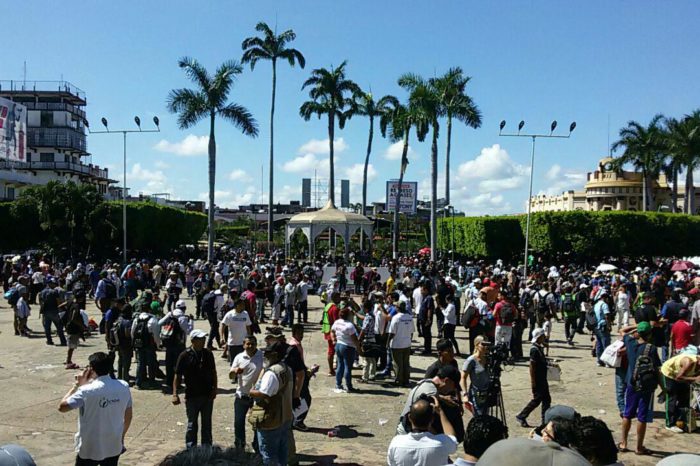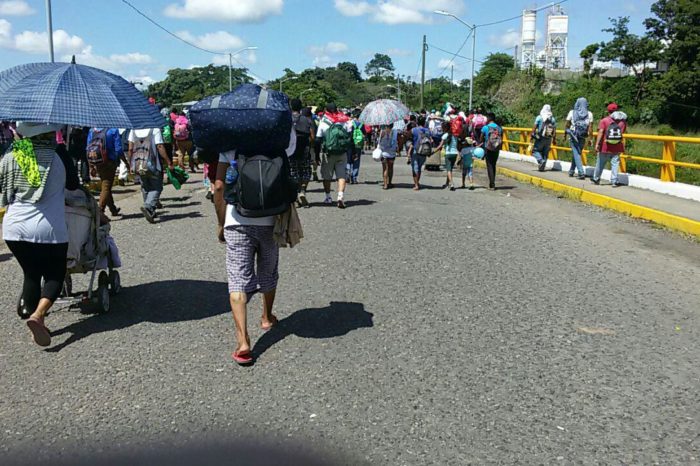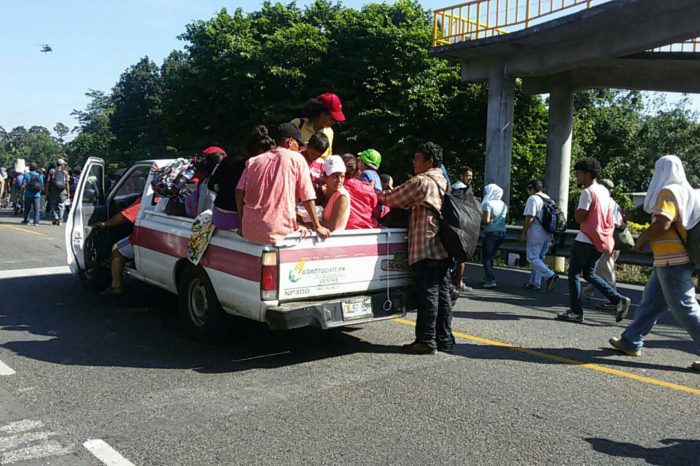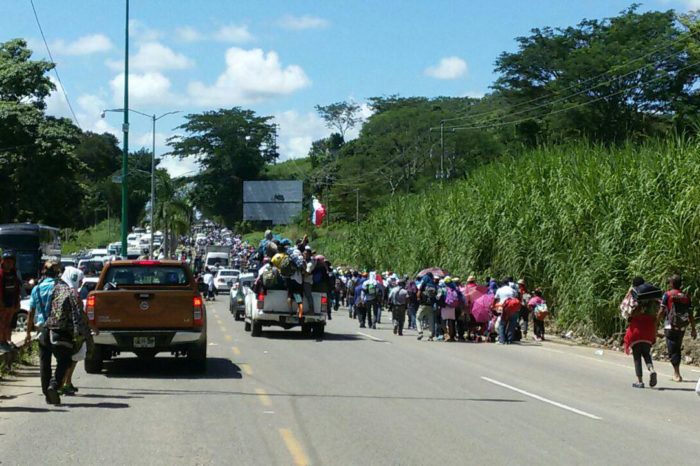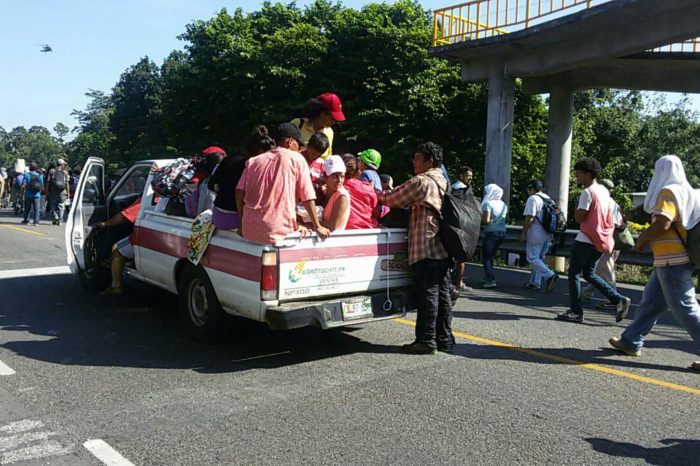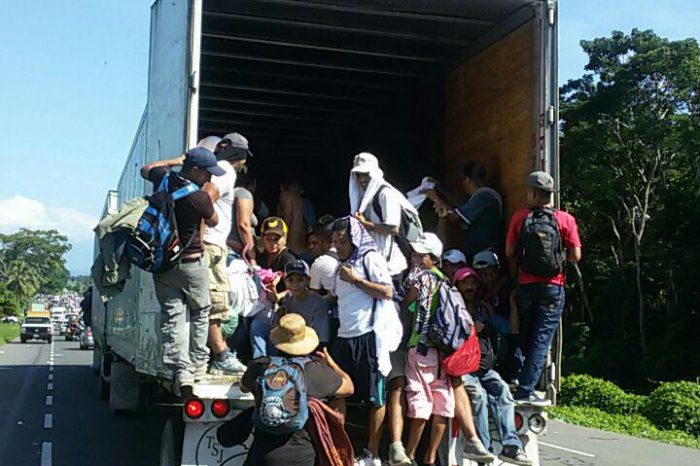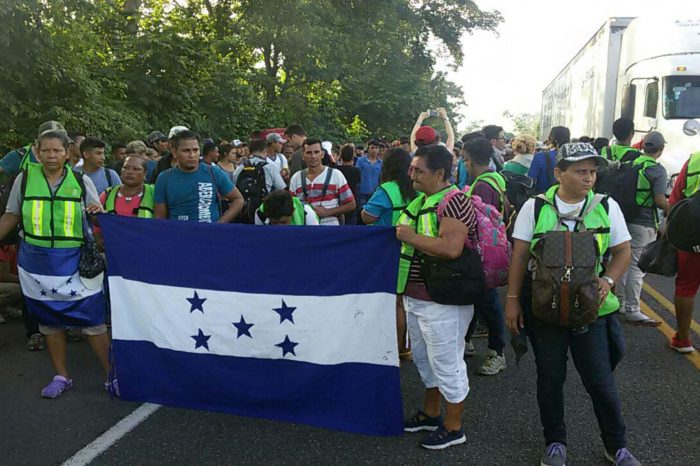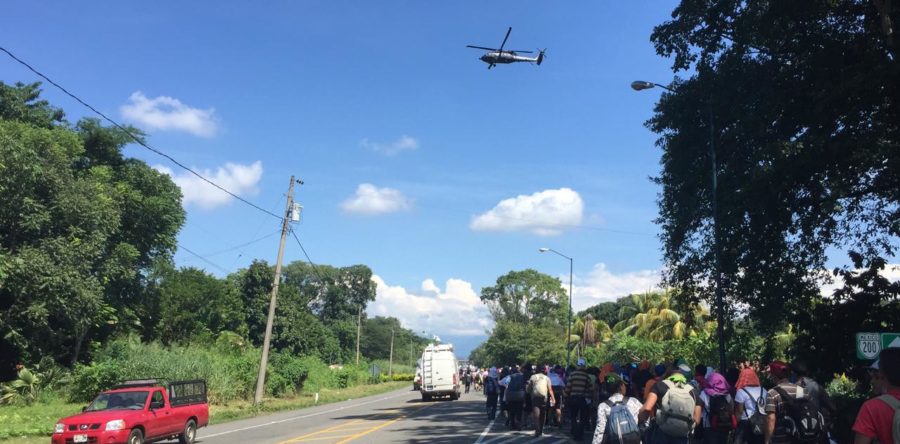Sorry, this entry is only available in Español. For the sake of viewer convenience, the content is shown below in the alternative language. You may click the link to switch the active language.
Tapachula 22 de octubre de 2018
Durante la observación realizada el día de hoy por las organizaciones trabajando en frontera sur reiteramos nuestro compromiso de continuar monitoreando las acciones implementadas por el Estado mexicano para
responder a la emergencia humanitaria derivada por las crisis en Centroamérica, en particular en Honduras.
Han pasado tres días y al menos 200 personas incluidas niñas, niños y adolescentes, permanecen a la espera en el Puente de Guatemala-México sin condiciones dignas, a la intemperie y sin ayuda humanitaria gubernamental, con las afectaciones físicas y emocionales que esta situación conlleva.
La asistencia humanitaria sigue estando condicionada a la detención migratoria en la Feria Mesoamericana.
Sigue sin haber transparencia negándose la información sobre las personas detenidas lo que propicia la separación de las familias, dificulta una respuesta integral y coordinada desde distintas instituciones y contribuye a la incertidumbre afectando el estado general de las personas. Las condiciones de detención
migratoria en ningún caso son aceptables para niños, niñas y adolescentes.
En Tapachula, después de la conferencia de prensa las personas que forman parte del éxodo partieron rumbo a Huixtla, Chiapas. En el camino, se hacen evidentes las consecuencias de lo sucedido en días previos en el desgaste de las personas; de manera visible se observa que niños y niñas presentan cuadros de salud como conjuntivitis, golpes de calor, deshidratación, diarrea, tos, fiebre y cada vez son más frecuentes los signos de agotamiento en la población adulta.
Como efecto del hostigamiento y la tensión de las que han sido sujetas en la última semana, se constata el estado de alerta y de desconfianza, por ejemplo, ante la posibilidad de descansar en un recinto amplio pero cerrado, las personas decidieron dormir en otros espacios ante el temor de ser cercadas y detenidas.
Una vez más la población ha dado grandes muestras de solidaridad, a pesar de los crecientes discursos de criminalización y xenofobia.
Parte de la emergencia se mueve con el éxodo y paralelamente en el Puente Guatemala-México y en Tapachula persisten las situaciones de riesgo en el incumplimiento de garantías de protección a la vida e integridad de las personas que están entrando al país o que son detenidas por su situación migratoria, así como el riesgo de que sufran daños irreparables, incluyendo graves violaciones a derechos humanos.
Hoy atestiguamos con mucho dolor lo que ayer advertimos; un joven de 22 años cayó de un vehículo en movimiento y perdió la vida buscando salvarla. Retomamos lo dicho en la rueda de prensa “sabemos que México es un cementerio, por eso estamos viajando juntos”
Firman. Iniciativas para el Desarrollo Humano, Una Mano Amiga en la Lucha Contra el SIDA, AC, American Friends Service Committee oficina Latinoamérica y el Caribe, Servicio Jesuita a Refugiados (JRS) y Servicio Jesuita a Migrantes (SJM), Voces Mesoamericanas Acción con Pueblos Migrantes AC, Otros Mundos Chiapas, Médicos del Mundo Suiza, Médicos del Mundo Francia y España y Centro de Derechos Humanos Fray Matías de Córdova AC
Videos: Radio Zapatista



